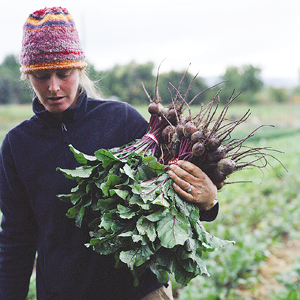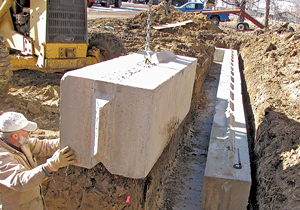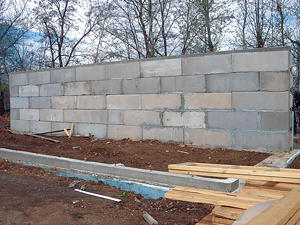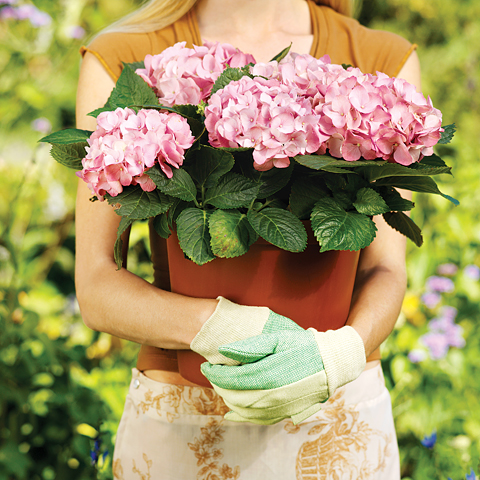Green Guide: Growing “Green” Food
04 Jul 2010
The nation’s first net-zero greenhouse is being built and tested at a local organic farm by a Boulder firm, which hopes to develop it for residential applications so homeowners can grow vegetables year- round—without the associated astronomical energy costs.
It’s an odd disconnect: If you grow your own food, chances are you’re going to have to burn up a lot of fossil fuel. Anne Cure, proprietor of Cure Organic Farm in Boulder, knows this all too well. She’s tried the limited ways that are available to extend the growing season in her greenhouses, including filling 55-gallon drums with water so they’ll re-radiate daytime heat at night. “Currently there are very few models out there that keep the hot air that’s collected in the greenhouse in at night,” she says.
Enter Larry Kinney, an entrepreneur and consultant with three decades of experience on energy projects.
“I think it’s pretty stupid,” he says, “to burn a lot of coal to grow tomatoes.”
Now, Kinney is doing something about it. He and his colleagues at his Boulder-based company, Synergistic Building Technologies, have teamed up with local organic farmers to build a greenhouse that will come very close, he thinks, to net-zero carbon emissions. He’s incorporating technologies with the potential to be reproduced at a variety of scales, from a 300-square-foot hobby greenhouse in someone’s backyard, “all the way up to a commercial pole warehouse,” he says.
“These could be building blocks that could fit into a wide range of buildings.”
“Currently there are very few models out there that keep the hot air that’s collected in the greenhouse in at night,” she says.
Enter Larry Kinney, an entrepreneur and consultant with three decades of experience on energy projects.
“I think it’s pretty stupid,” he says, “to burn a lot of coal to grow tomatoes.”
Now, Kinney is doing something about it. He and his colleagues at his Boulder-based company, Synergistic Building Technologies, have teamed up with local organic farmers to build a greenhouse that will come very close, he thinks, to net-zero carbon emissions. He’s incorporating technologies with the potential to be reproduced at a variety of scales, from a 300-square-foot hobby greenhouse in someone’s backyard, “all the way up to a commercial pole warehouse,” he says.
“These could be building blocks that could fit into a wide range of buildings.”
 The “R & D greenhouse,” as he’s calling it, is nearing completion at Cure Organic Farm, operated by Anne Cure on the property of “Farmer John” Ellis on Valmont Road, just east of Boulder city limits.
This spring, the future greenhouse was little more than a foundation and a hulking concrete wall—a deceptively innovative component. That’s because the 84 giant blocks used in the wall— each weighing 3,500 pounds—cost only $10 apiece, but pack a powerful energy- saving punch by contributing hugely to thermal mass, helping the greenhouse trap heat. The concrete was poured from the dregs of cement trucks, Kinney says, and the concrete companies were practically clamoring to give it away.
The “R & D greenhouse,” as he’s calling it, is nearing completion at Cure Organic Farm, operated by Anne Cure on the property of “Farmer John” Ellis on Valmont Road, just east of Boulder city limits.
This spring, the future greenhouse was little more than a foundation and a hulking concrete wall—a deceptively innovative component. That’s because the 84 giant blocks used in the wall— each weighing 3,500 pounds—cost only $10 apiece, but pack a powerful energy- saving punch by contributing hugely to thermal mass, helping the greenhouse trap heat. The concrete was poured from the dregs of cement trucks, Kinney says, and the concrete companies were practically clamoring to give it away.
Pockets Full of Peppers
But between the parallel pieces of glass, there’s the shutter, a 2-inch piece of rigid insulation with a reflective coating. When the shutter is in its pocket, hidden in the top pane, you can look through the bottom pane—or the sun can shine through. Slide the shutter down, and the “window” becomes solid and reflective— perfect for deflecting the sun’s daytime rays, or for keeping warmth in at night. Once installed in the greenhouse, the pocket shutter motors will be controlled by electronics inside a box with light and heat sensors, with the option to switch to a manual setting. Other channels will open and close dampers so the greenhouse can cool down. “Someday I’ll have it set up so you can be hanging out in the Caribbean and controlling it all on the Web,” Kinney jokes.
Besides the twelve 32-square-foot pocket-shutter windows along the green house’s south-facing wall, the greenhouse roof will support 12 more similarly sized windows, with one difference: Those will be swingers, where the solid, lightweight rectangle of insulation will be pulled into or out of alignment with the front glass to block the sun’s light, or invite it in.
Every surface inside the greenhouse will be painted white, except the plants and the earth, so that the light that does enter the greenhouse is maximized.
To top things off, air in a set of pipes will get heated by the sun by day, and can be fanned underneath the greenhouse at night to guard against nighttime chills.
“Someday I’ll have it set up so you can be hanging out in the Caribbean and controlling it all on the Web,” Kinney jokes.
Besides the twelve 32-square-foot pocket-shutter windows along the green house’s south-facing wall, the greenhouse roof will support 12 more similarly sized windows, with one difference: Those will be swingers, where the solid, lightweight rectangle of insulation will be pulled into or out of alignment with the front glass to block the sun’s light, or invite it in.
Every surface inside the greenhouse will be painted white, except the plants and the earth, so that the light that does enter the greenhouse is maximized.
To top things off, air in a set of pipes will get heated by the sun by day, and can be fanned underneath the greenhouse at night to guard against nighttime chills.
 Kinney is highly confident that the greenhouse, barring start-up glitches, will work like a charm. But there will be a minor technical issue for the plant people to deal with, he says, grinning: “We haven’t figured out how to distinguish between the plants you want and the weeds,” he says. “They will both thrive in this greenhouse.”
Kinney is highly confident that the greenhouse, barring start-up glitches, will work like a charm. But there will be a minor technical issue for the plant people to deal with, he says, grinning: “We haven’t figured out how to distinguish between the plants you want and the weeds,” he says. “They will both thrive in this greenhouse.”












